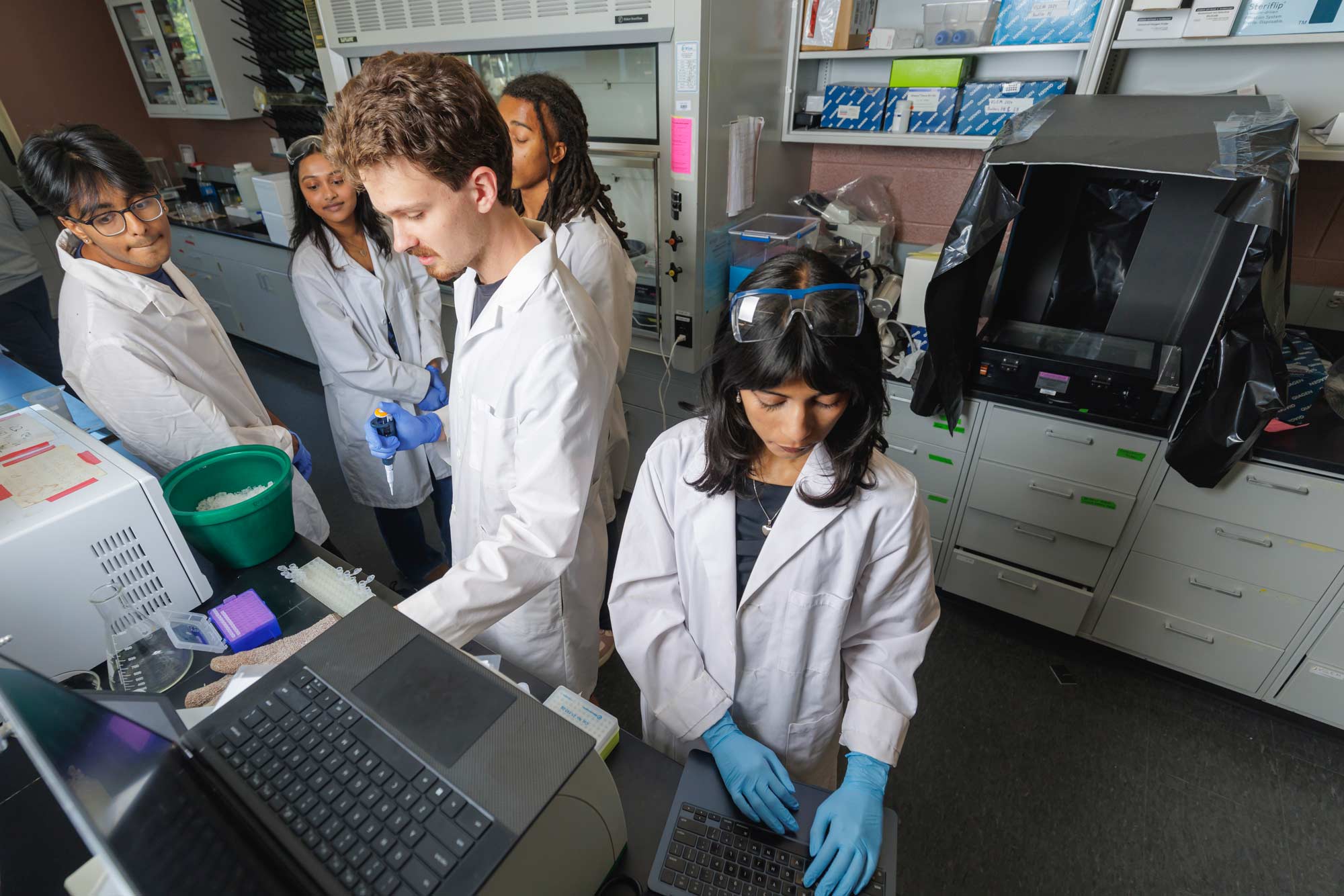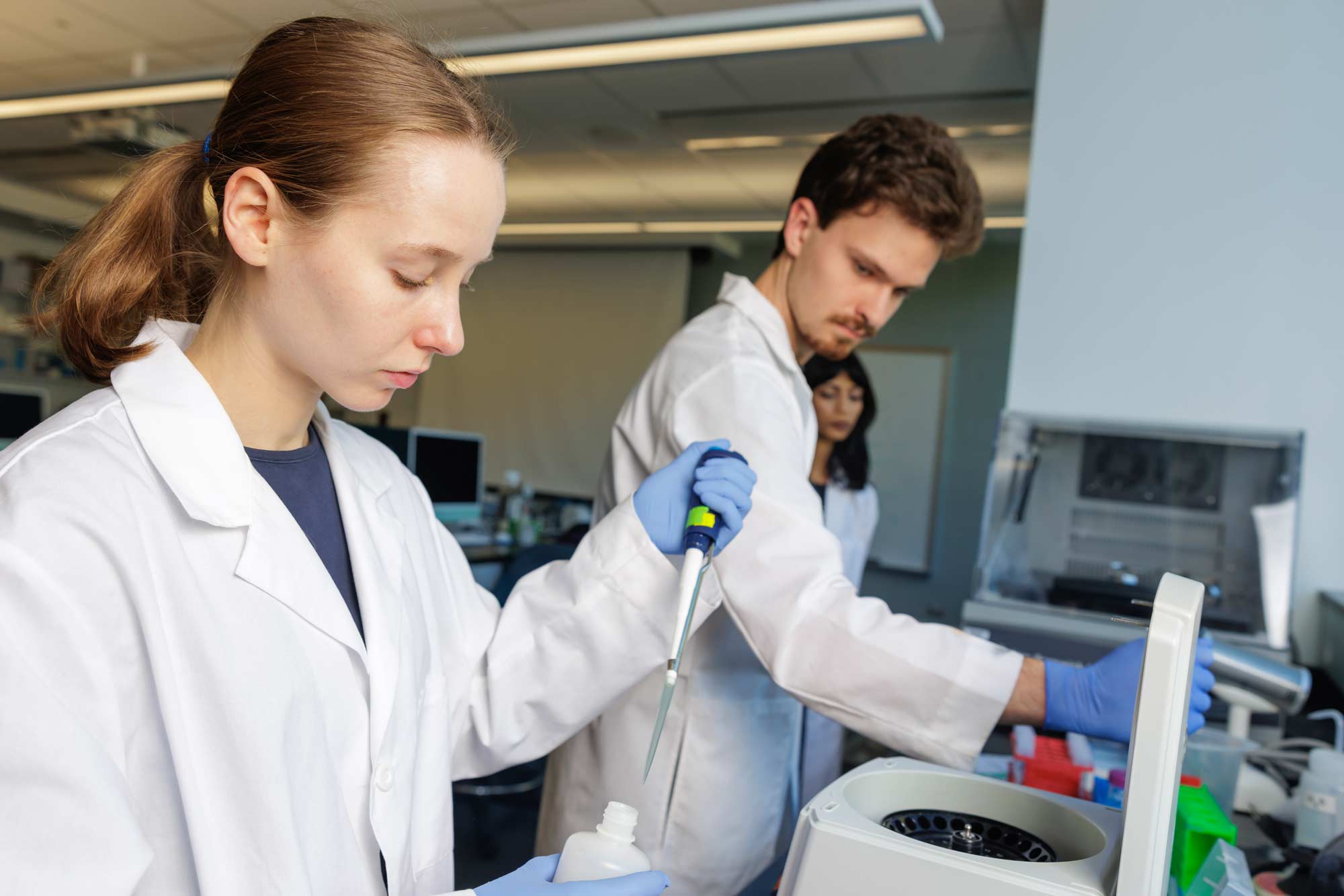Katie Nichols envisions a future powered by clean energy. But she concedes there are challenges. Some areas of the Earth don’t get a lot of sun. Other areas don’t get a lot of wind.
“But waste,” she said, “is such a well-distributed resource.”
Populations all over the world both throw out food and go to the bathroom. So Nichols, a third-year biology student in the University of Virginia’s College of Arts & Sciences, and eight of her peers are working on an idea to turn organic waste – like food scraps and sewage – into clean energy by tinkering with bacterial DNA.

The UVA student researchers wrap up work in their lab as they prepare to present their findings at the world’s largest synthetic biology exposition and competition. (Photo by Lathan Goumas, University Communications)
This week, the UVA team is in Paris at the iGEM Grand Jamboree – or International Genetically Engineered Machine contest – which bills itself as the world’s biggest synthetic biology competition, a place where biology and engineering combine.
They’ll face 400 international teams in a competition that is part science fair and part “Shark Tank.” The team’s months of research and work will come down to a five-minute presentation and a 25-minute grilling from the judges.
“That’s the biggest challenge that any team has, that any scientist has, and that is, ‘All right, I’ve done 10 months of work here. How do I get this into short and sweet so that a judge can understand?’” Sahvir Bhaskaruni, a third-year biomedical engineering student in the School of Engineering and Applied Science, said.
Here’s the idea they are presenting:












